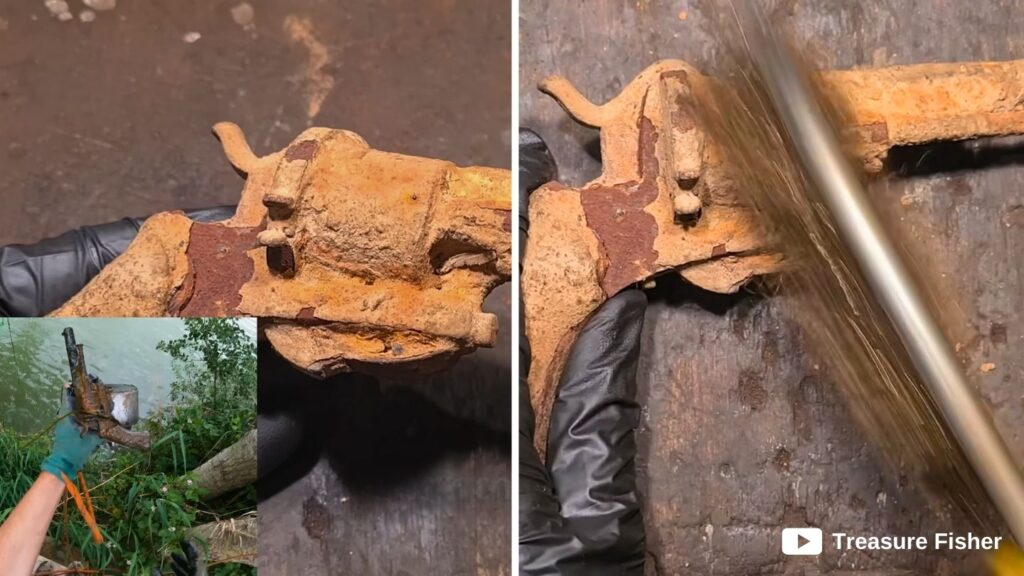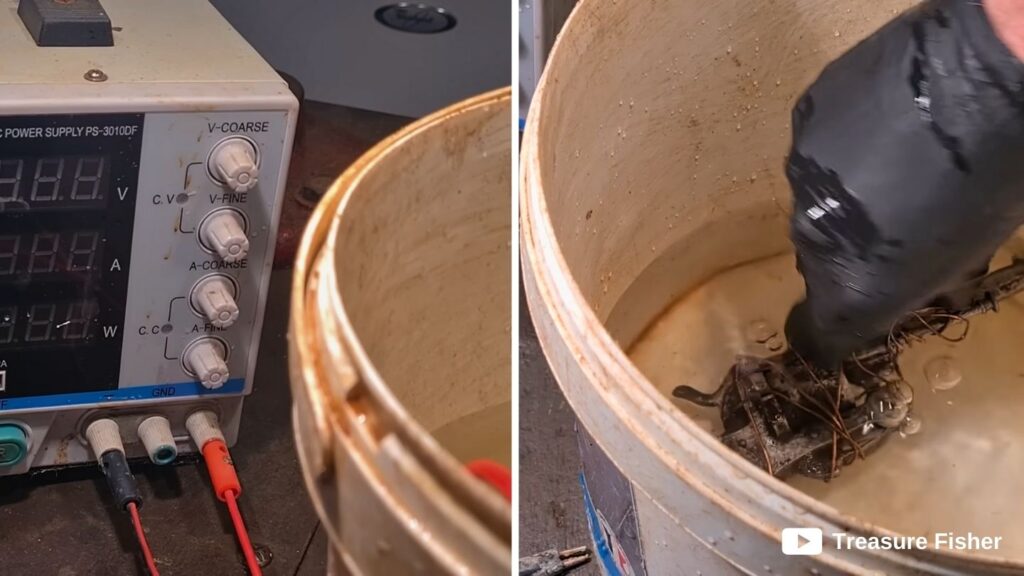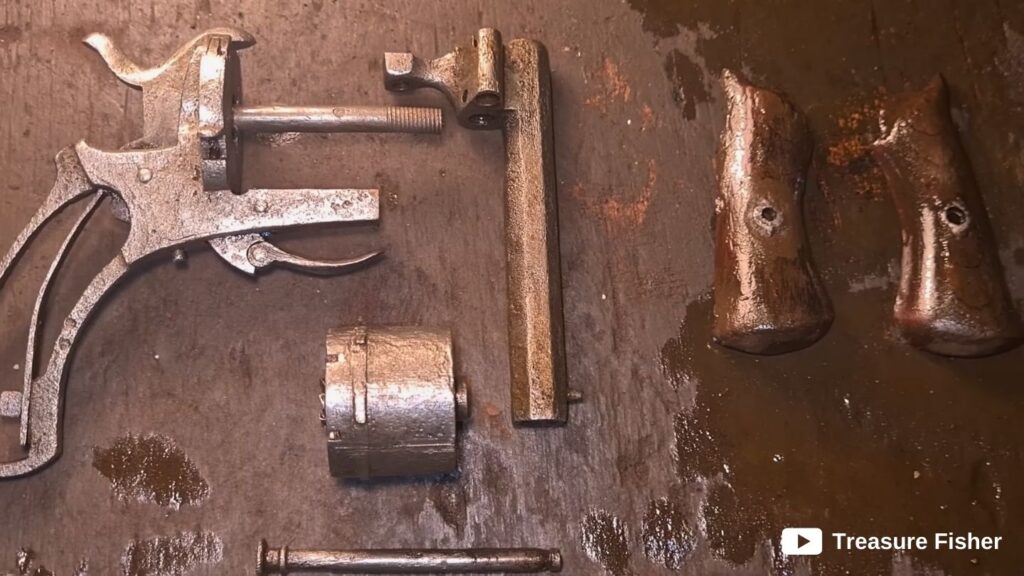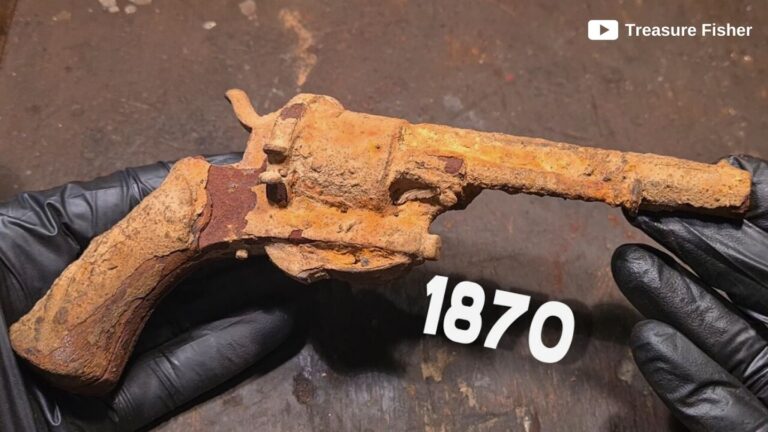Sometimes, history emerges from the most unexpected places. During a magnet fishing expedition in southern France, an extraordinary relic was unearthed: a Lefaucheux revolver dating back to the 1860s, the era of Napoleon III. Rusted and deteriorated after decades underwater, this historic firearm held secrets waiting to be revealed.
A Glimpse into the Past
The Lefaucheux revolver was a groundbreaking piece of technology in its time, credited to inventor Eugène Lefaucheux. Famous for its pinfire cartridge mechanism, this model revolutionized firearms in the 19th century. The revolver found in France’s waters bore the unmistakable marks of its age: heavy rust, structural damage, and the toll of decades in a submerged state. Despite its condition, the team decided to undertake a meticulous gun restoration—not to restore functionality but to preserve it as a historical artifact.
Restoring the Relic: A Step-by-Step Journey

- Initial Cleaning The gun restoration began with carefully removing the layers of rust. Wire brushes and specialized tools were used to reveal the revolver’s intricate details without causing further damage.

- Electrolysis Bath To tackle deeply ingrained corrosion, the team used an electrolysis bath. This method involved submerging the revolver in a solution and passing a small electrical current through it. Over time, this process lifted the rust while preserving the underlying metal.

- Disassembly and Precision Work Once cleaned, the revolver was disassembled. Each component—from the cylinder to the wooden grips—underwent individual cleaning and preservation. Remarkably, even the tiniest screws were salvaged and restored.

- Metal Stabilization After cleaning, a protective layer was applied to the metal surfaces to prevent future rusting. This step ensured the revolver could serve as a display piece without deteriorating further.
- Grip Restoration The wooden grips, though heavily damaged, were treated and reinforced to retain their original character. They now stand as a testament to the craftsmanship of the period.
The Final Outcome

The restored Lefaucheux revolver is far from its former glory as a weapon, but as a historical artifact, it shines. Every detail, from the hammer to the barrel, tells a story of a bygone era. The revolver is now preserved as a decorative piece, showcasing the ingenuity of 19th-century firearm design.
Navigating Legal and Ethical Considerations
Given the revolver’s history and condition, the decision was made not to involve law enforcement. Classified as a Category D firearm, it is no longer functional and poses no risk. The gun restoration was undertaken solely to preserve a piece of history and to highlight the craftsmanship of the period. Importantly, this project does not endorse weapon ownership or use; it is an appreciation of history and engineering.
Why Does This Matter?
This gun restoration highlights the importance of preserving historical artifacts, no matter how small or seemingly insignificant. It’s a reminder that history surrounds us, waiting to be rediscovered and appreciated. The Lefaucheux revolver’s journey from the depths of a river to a preserved relic is a fascinating glimpse into the past and a testament to the dedication of those who cherish history.
Closing Thoughts
Magnet fishing might seem like a simple hobby, but it often leads to surprising finds that connect us to history. Projects like this inspire curiosity and foster a deeper understanding of the past. As this Lefaucheux revolver now sits in its preserved state, it serves as a conversation starter, a historical artifact, and a tribute to 19th-century ingenuity.
Watch the Full Restoration
If you want to see the complete process in action, watch the video on the Treasure Fisher YouTube channel and witness history come alive!
Related
Restoring a Rusted Colt Python .357 Magnum Lighter: A Mesmerizing Transformation
Breathing New Life into an Antique 1894 Singer Sewing Machine


0 Comments